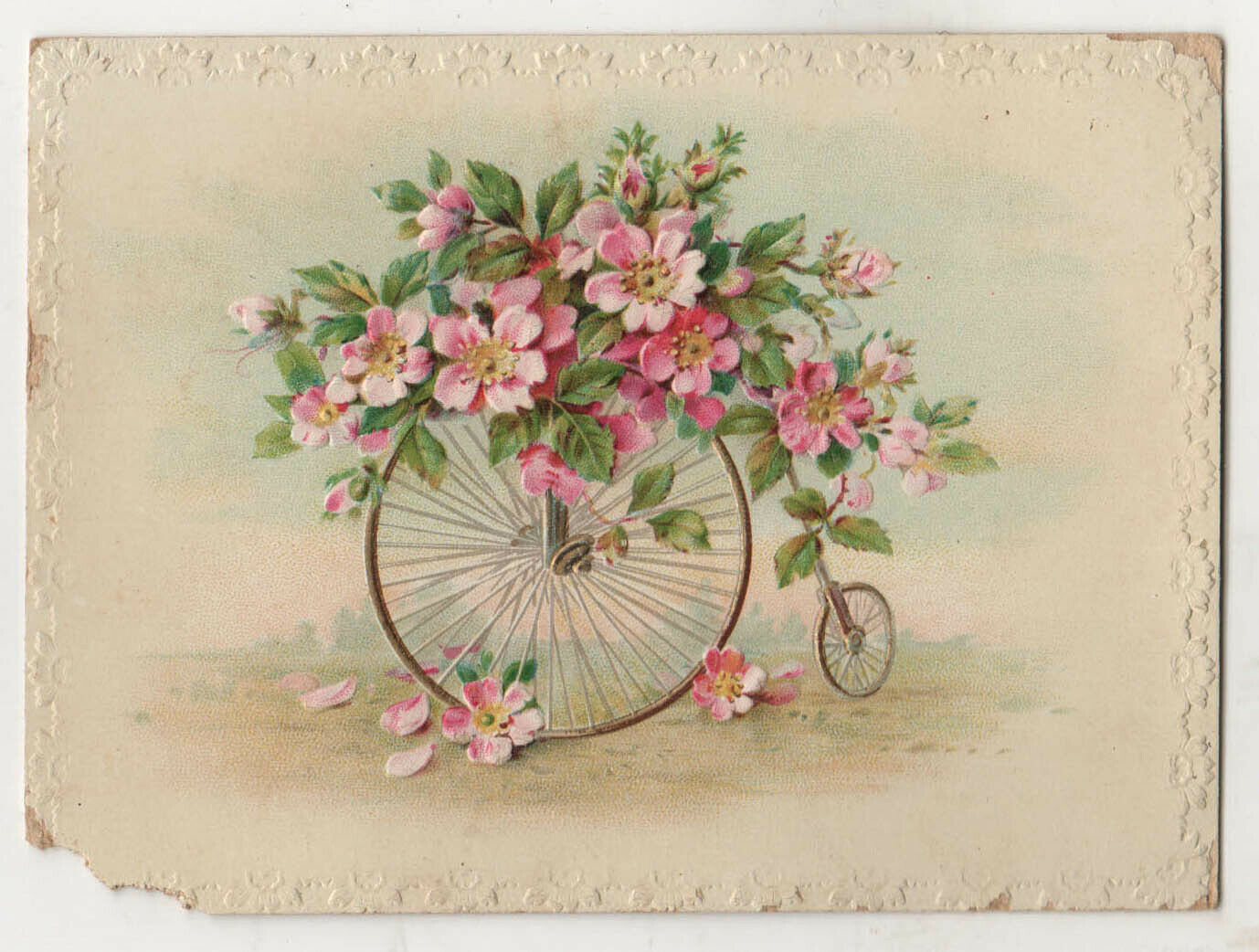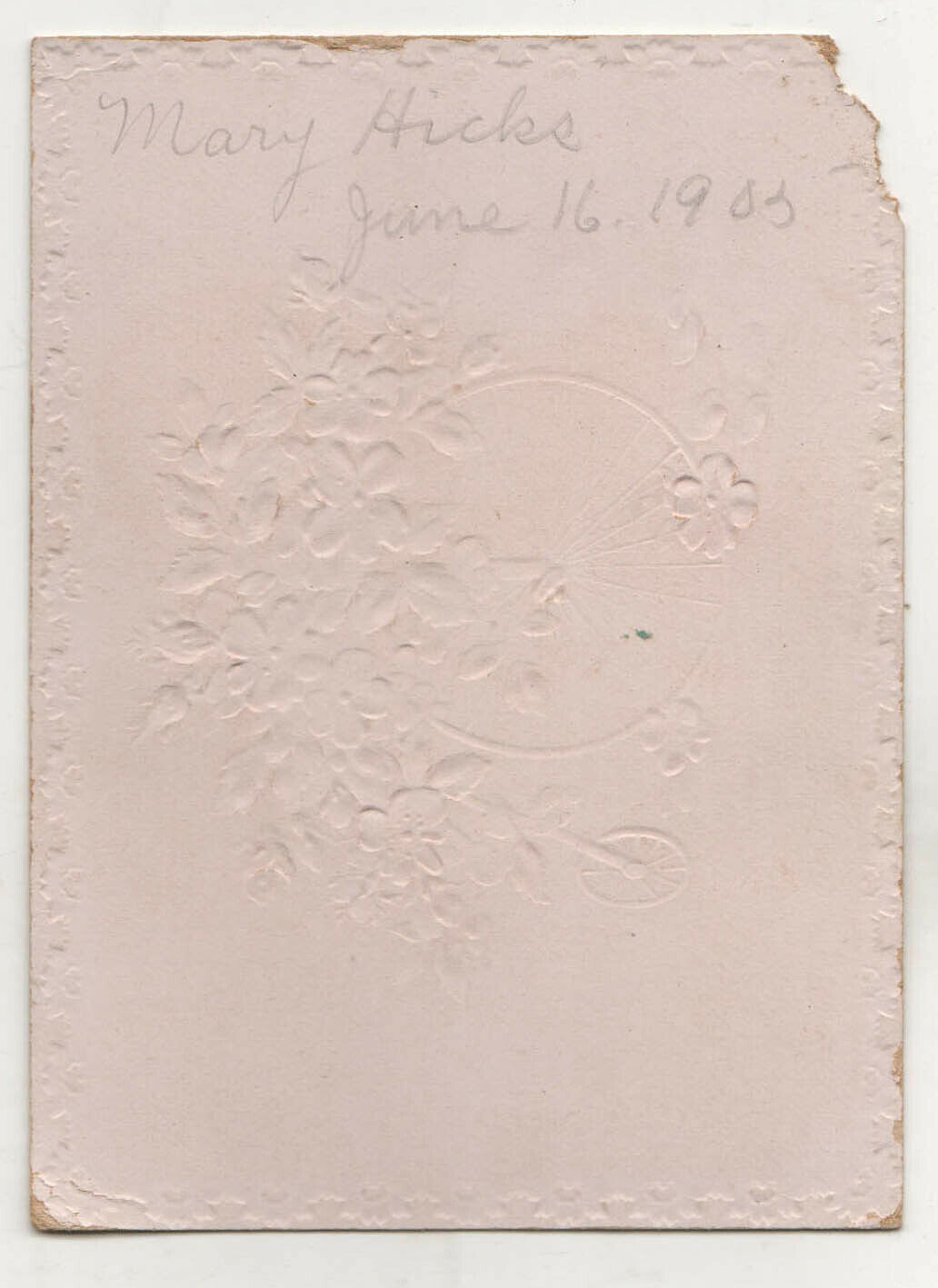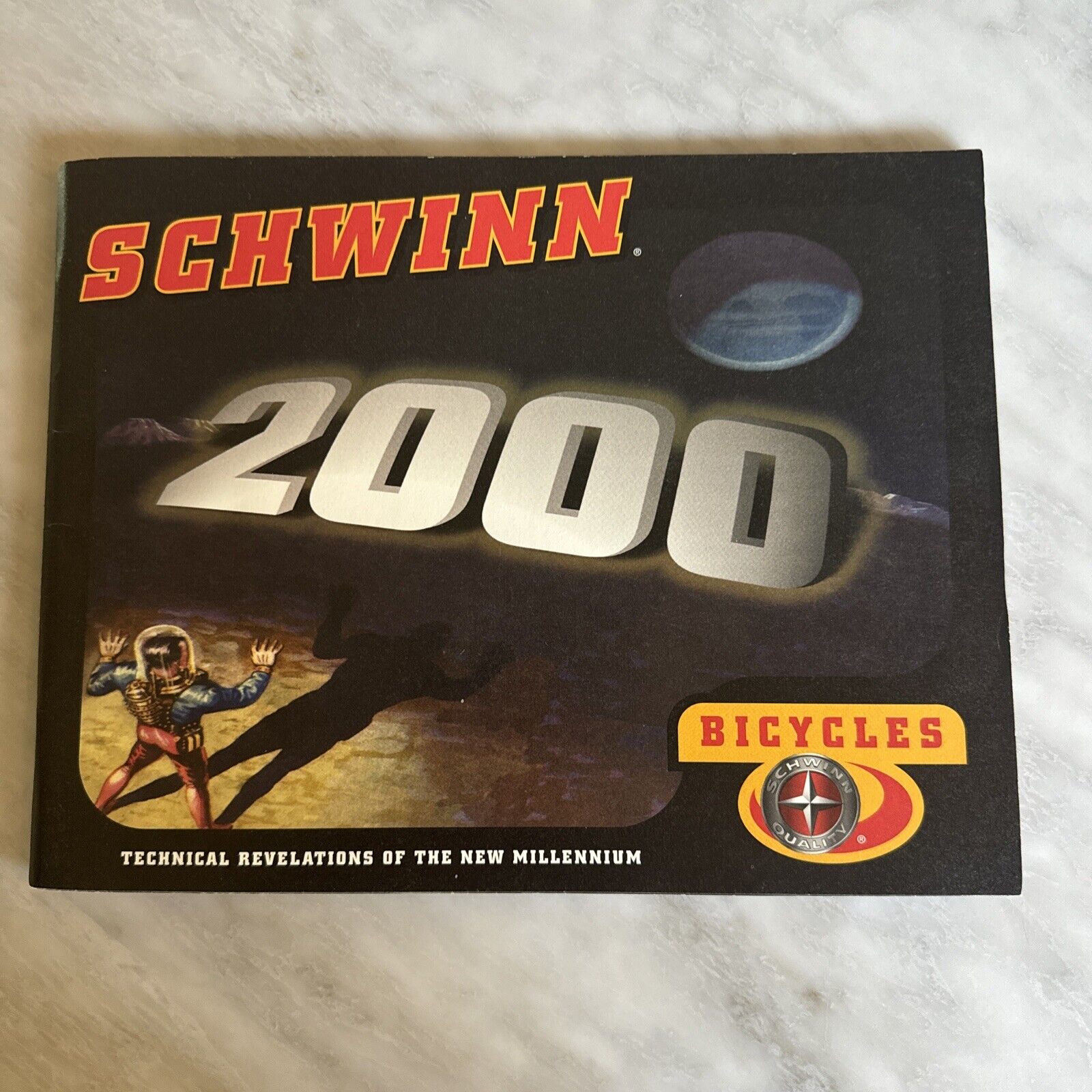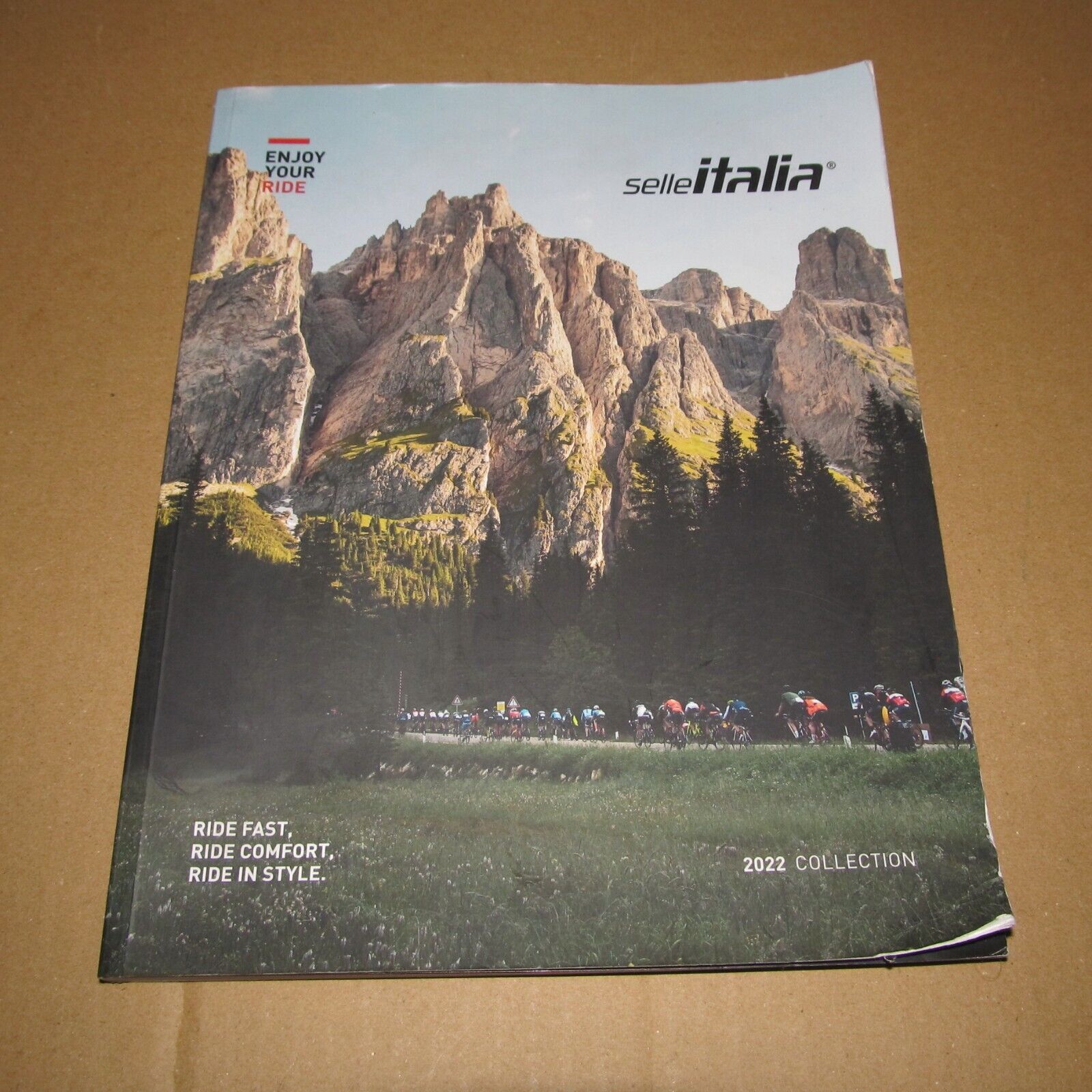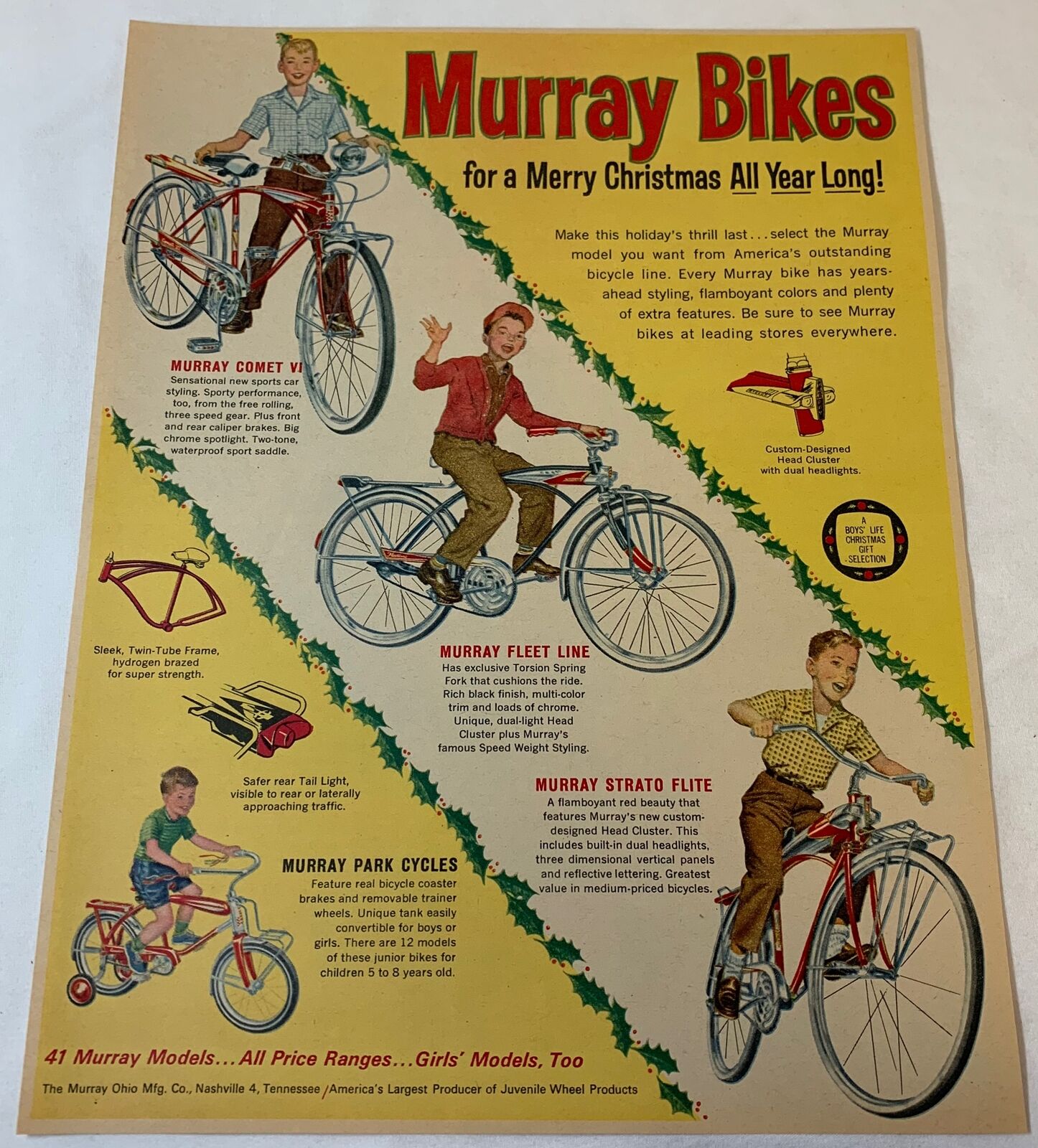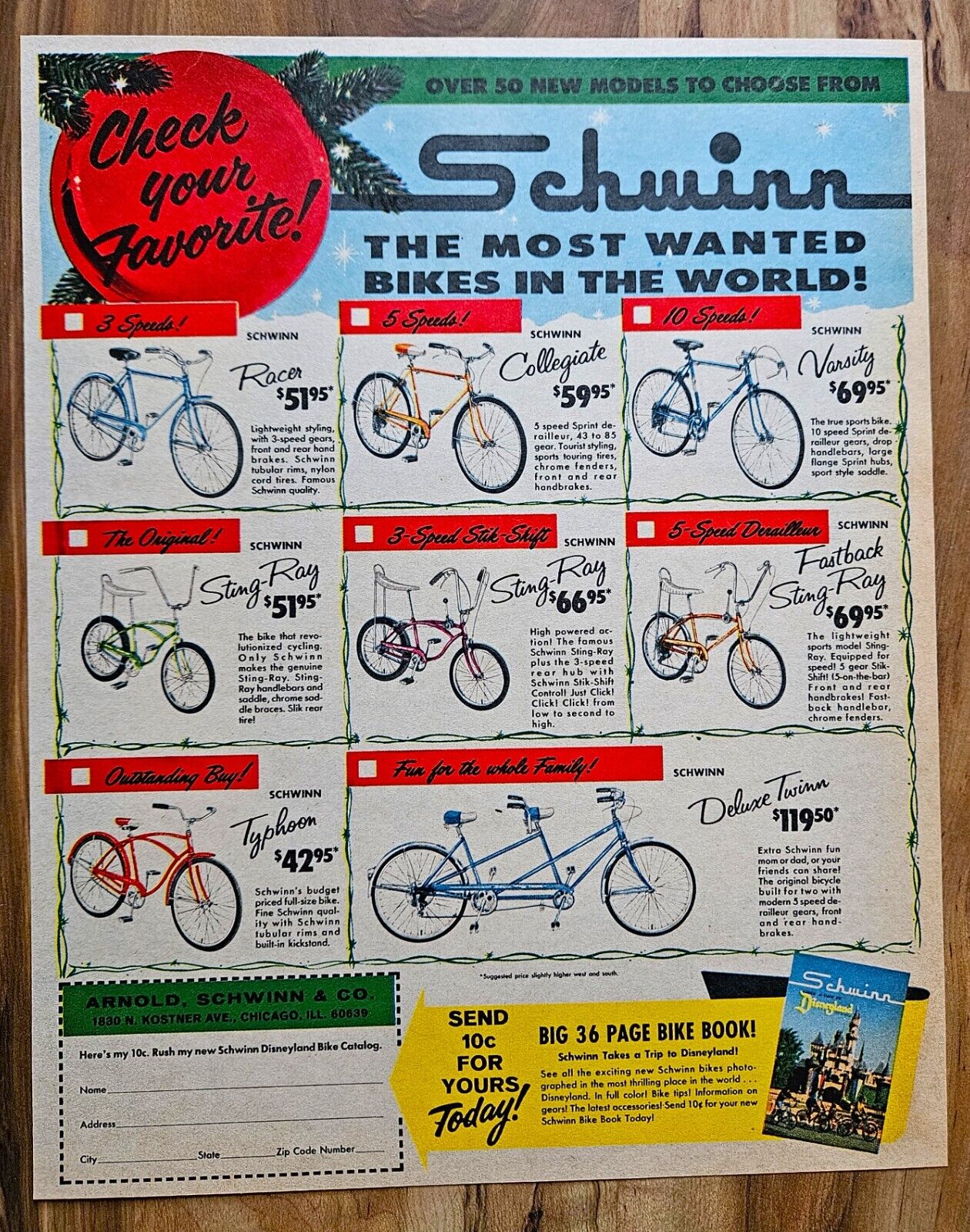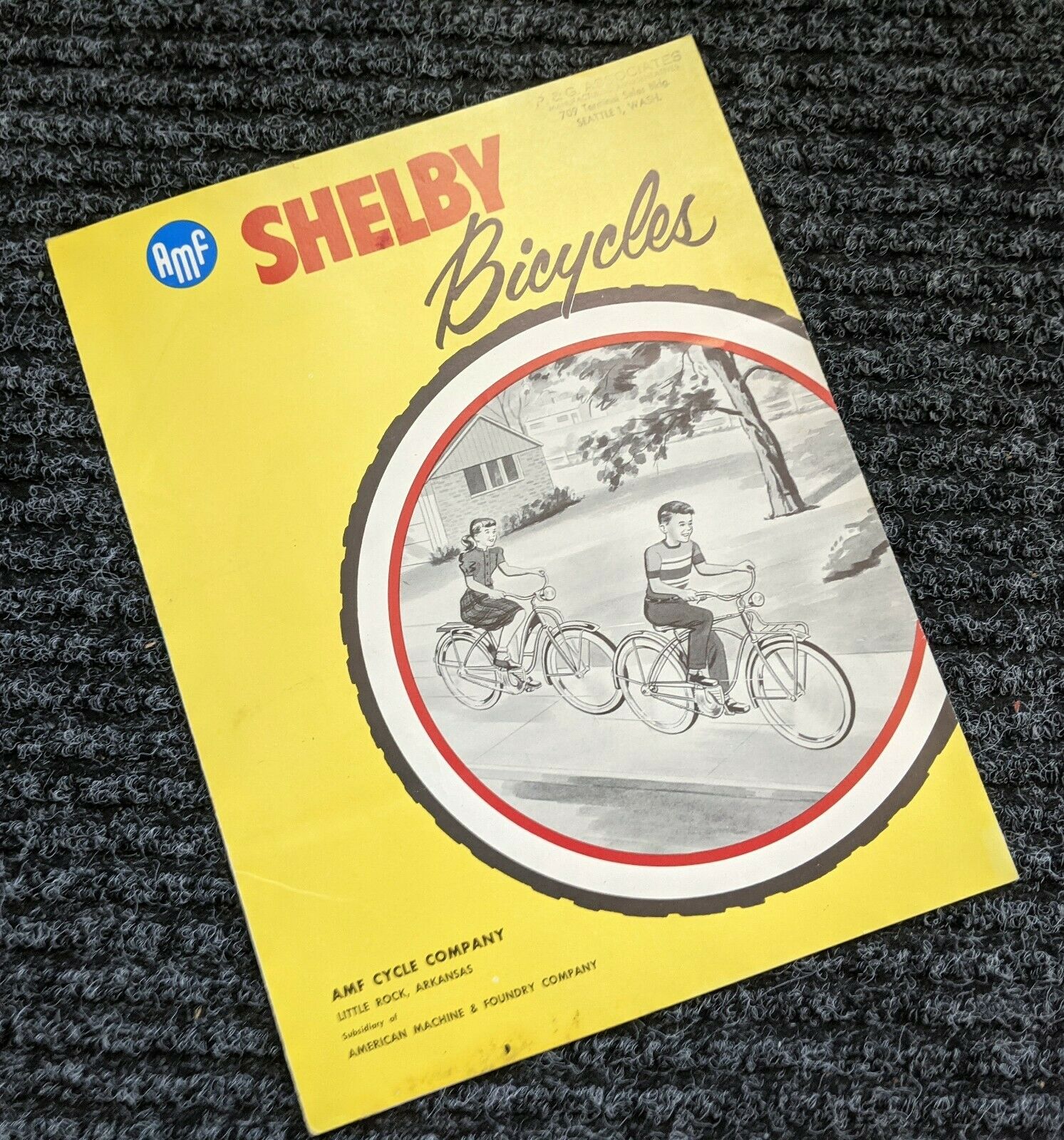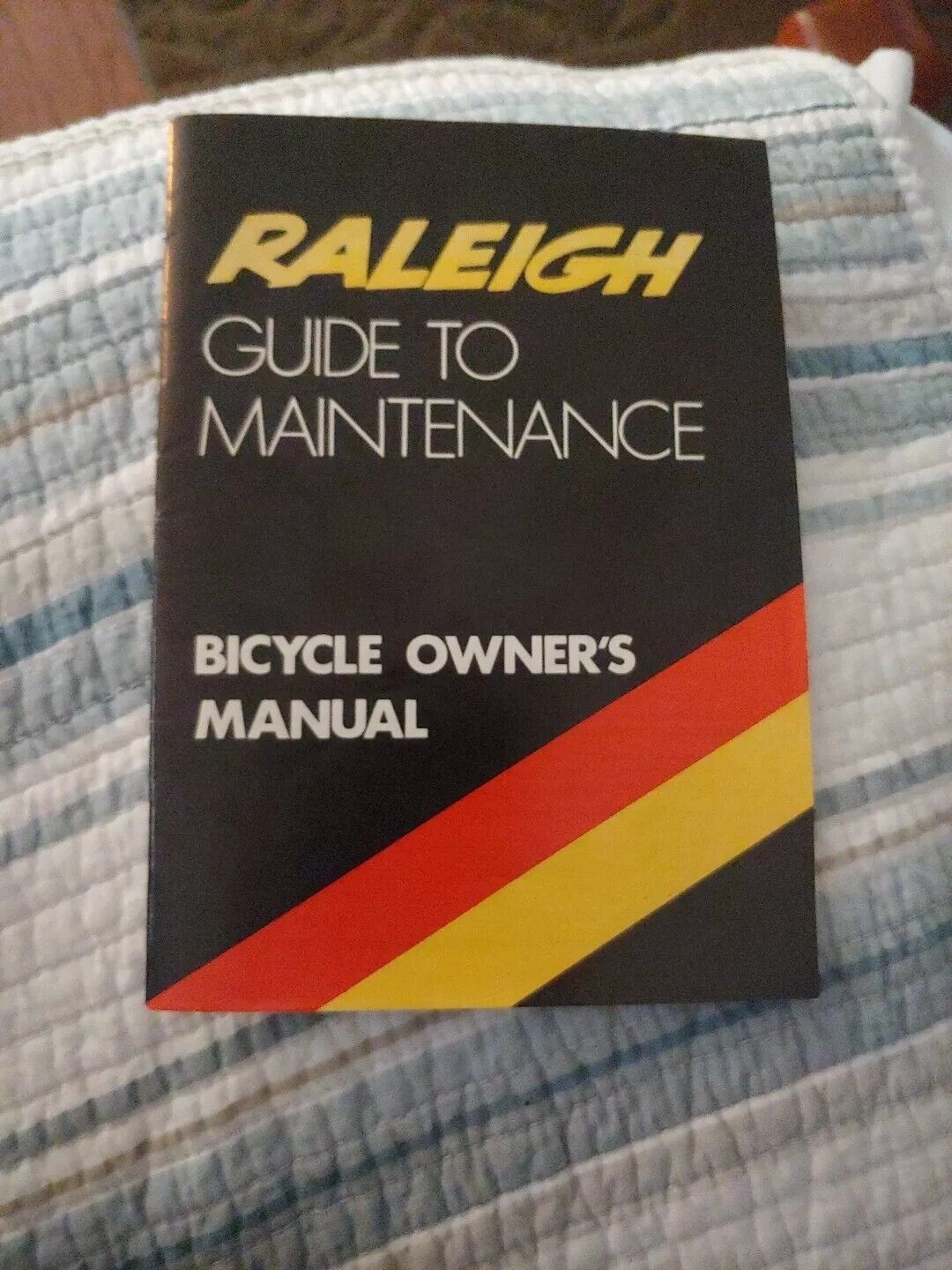-40%
1905 HIGH WHEELER Bicycle PENNY FARTHING Embossed Card FLORAL Wheel BIKE Hicks
$ 13.19
- Description
- Size Guide
Description
HIGH WHEEL CARDFREE SHIPPING with delivery confirmation on all domestic purchases!
Nice 3-1/4" x 4-1/2" embossed card featuring flowers on a high wheeler; at reverse is written, "Mary Hicks, June 16, 1905"
Corner chipped
We ship worldwide! Please see all pictures and visit
our eBay store and other eBay auctions!
The penny-farthing, also known as a high wheel, high wheeler and ordinary, was the first machine to be called a "bicycle".[1] It was popular in the 1870s and 1880s, with its large front wheel providing high speeds (owing to it travelling a large distance for every rotation of the legs) and comfort (the large wheel provides greater shock absorption). It became obsolete from the late 1880s with the development of modern bicycles, which provided similar speed amplification via chain-driven gear trains and comfort through pneumatic tyres, and were marketed in comparison to penny-farthings as "safety bicycles" due to the reduced danger of falling and the reduced height to fall from.[2]
The name came from the British penny and farthing coins, one much larger than the other, so that the side view resembles a penny leading a farthing.[3] Although the name "penny-farthing" is now the most common, it was probably not used until the machines were nearly outdated; the first recorded print reference is from 1891 in Bicycling News.[4] For most of their reign, they were simply known as "bicycles". In the late 1890s, the name "ordinary" began to be used, to distinguish them from the emerging safety bicycles;[5] this term and "hi-wheel" (and variants) are preferred by many modern enthusiasts.[6][7]
Following the popularity of the boneshaker, Eugène Meyer, a Frenchman, invented the high-wheeler bicycle design in 1869 and fashioned the wire-spoke tension wheel.[8] Around 1870 English inventor James Starley, described as the father of the bicycle industry, and others, began producing bicycles based on the French boneshaker but with front wheels of increasing size,[3] because larger front wheels, up to 5 feet (1.52 m) in diameter, enabled higher speeds on bicycles limited to direct drive.[2][3][9][10][11] In 1878, Albert Pope began manufacturing the Columbia bicycle outside Boston, starting their two-decade heyday in America.[3]
Although the trend was short-lived, the penny-farthing became a symbol of the late Victorian era. Its popularity also coincided with the birth of cycling as a sport.[3]
Eugène Meyer of Paris, France is now regarded as the father of the high bicycle[8] by the International Cycling History Conference in place of James Starley. Meyer patented a wire-spoke tension wheel with individually adjustable spokes in 1869.[3] They were called "spider" wheels in Britain when introduced there.[3] Meyer produced a classic high bicycle design during the 1880s.
James Starley in Coventry added the tangent spokes[3] and the mounting step to his famous bicycle named "Ariel". He is regarded as the father of the British cycling industry. Ball bearings, solid rubber tires and hollow-section steel frames became standard, reducing weight and making the ride much smoother.[3]
Penny-farthing bicycles are dangerous due to the risk of headers (taking a fall over the handlebars head-first). Makers developed "moustache" handlebars, allowing the rider's knees to clear them,[12] "Whatton" handlebars that wrapped around behind the legs,[13] and ultimately (though too late, after development of the safety bicycle), the American "Eagle" and "Star" bicycles, whose large and small wheels were reversed.[14][15] This prevented headers, but left the danger of being thrown backwards when riding uphill. Other attempts included moving the seat rearward and driving the wheel by levers or treadles, as in the "Xtraordinary" and "Facile",[16][17] or gears, by chain as in the "Kangaroo" or at the hub, as in the "Crypto";[14] another option was to move the seat well back, as in the "Rational".[14][18]
Even so, bicycling remained the province of the urban well-to-do, and mainly men, until the 1890s,[19] and was a salient example of conspicuous consumption.[20]
Attributes
Man standing next to a penny farthing in Fife, Scotland, 1880
The penny-farthing used a larger wheel than the velocipede, thus giving higher speeds on all but the steepest hills. In addition, the large wheel gave a smoother ride,[21] important before the invention of pneumatic tires.[22]
Although the high riding position seems daunting to some, mounting can be learned on a lower velocipede. Once the technique is mastered, a high wheeler can be mounted and dismounted easily on flat ground and some hills.[citation needed]
An attribute of the penny-farthing is that the rider sits high and nearly over the front axle. When the wheel strikes rocks and ruts, or under hard braking, the rider can be pitched forward off the bicycle head-first. Headers were relatively common and a significant, sometimes fatal, hazard. Riders coasting down hills often took their feet off the pedals and put them over the tops of the handlebars, so they would be pitched off feet-first instead of head-first.[13]
Penny-farthing bicycles often used similar materials and construction as earlier velocipedes: cast iron frames, solid rubber tires, and plain bearings for pedals, steering, and wheels. They were often quite durable and required little service. For example, when cyclist Thomas Stevens rode around the world in the 1880s, he reported only one significant mechanical problem in over 20,000 kilometres (12,000 mi), caused when the local military confiscated his bicycle and damaged the front wheel.
End of an era
The well-known dangers of the penny-farthing[23] were, for the time of its prominence, outweighed by its strengths. While it was a difficult, dangerous machine, it was simpler, lighter, and faster than the safer velocipedes of the time. Two new developments changed this situation, and led to the rise of the safety bicycle. The first was the chain drive, originally used on tricycles, allowing a gear ratio to be chosen independent of the wheel size. The second was the pneumatic bicycle tire, allowing smaller wheels to provide a smooth ride.
An 1880 penny-farthing (left), and the first modern bicycle, J. K. Starley's 1885 Rover safety bicycle (right)
The nephew of one of the men responsible for popularity of the penny-farthing was largely responsible for its demise. James Starley had built the Ariel (spirit of the air)[24] high-wheeler in 1870; but this was a time of innovation, and when chain drives were upgraded so that each link had a small roller, higher and higher speeds became possible without the large wheel. In 1885, Starley's nephew John Kemp Starley took these new developments to launch the modern bicycle, the Rover safety bicycle, so-called because the rider, seated much lower and farther behind the front wheel contact point, was less prone to a header.[3][25]
In 1888, when John Dunlop re-invented the pneumatic tire for his son's tricycle, the high wheel was made obsolete. The comfortable ride once found only on tall wheels could now be enjoyed on smaller chain-driven bicycles. By 1893, high-wheelers were no longer being produced.[2] Use lingered into the 1920s in track cycling until racing safety bicycles were adequately designed.
Today, enthusiasts ride restored penny-farthings, and a few manufacturers build new ones.[26]
Characteristics
The penny-farthing is a direct-drive bicycle, meaning the cranks and pedals are fixed directly to the hub. Instead of using gears to multiply the revolutions of the pedals, the driven wheel is enlarged to be close to the rider's inseam, to increase the maximum speed. This shifts the rider nearly on top of the wheel and makes it impossible for the rider to reach the ground while sitting on the seat.[3]
Construction
The frame is a single tube following the circumference of the front wheel, then diverting to a trailing wheel. A mounting peg is above the rear wheel. The front wheel is in a rigid fork with little if any trail. A spoon brake is usually fitted on the fork crown, operated by a lever from one of the handlebars. The bars are usually mustache shaped, dropping from the level of the headset. The saddle mounts on the frame less than 18 inches (46 cm) behind the headset.
One particular model, made by Pope Manufacturing Company in 1886, weighs 36 pounds (16 kg), has a 60-spoke 53-inch (130 cm) front wheel and a 20-spoke 18-inch (46 cm) rear wheel. It is fitted with solid rubber tires. The rims, frame, fork, and handlebars are made from hollow, steel tubing. The steel axles are mounted in adjustable ball bearings. The leather saddle is suspended by springs.[27]
Another model, made by Humber and Co., Ltd., of Beeston, Nottingham, England, weighs only 24 pounds (11 kg), and has 52-inch (130 cm) and 18-inch (46 cm) wheels. It has no step and no brakes, in order to minimize weight.[28]
A third model, also made by Pope Manufacturing Company, weighs 49 pounds (22 kg) and has forged steel forks. A brake lever on the right of a straight handlebar operates a spoon brake against the front wheel.[29]
All three have cranks that can be adjusted for length.
Operation
Mounting requires skill. The rider must first grasp the handlebar and place one foot on a peg above the back wheel. Then the rider scoots the bicycle forward to gain momentum and quickly jumps up onto the seat while continuing to steer the bicycle and maintain balance. [30]
Although easy to ride slowly because of their high center of mass and the inverted pendulum effect,[31][32] penny-farthings are prone to accidents. To stop, the rider presses back on the pedals while applying a spoon-shaped brake pressing the tire. The center of mass being high and not far behind the front wheel means any sudden stop or collision with a pothole or other obstruction can send the rider over the handlebars.[33] On long downhills, some riders hooked their feet over the handlebars. This made for quick descents but left no chance of stopping.[3] A new type of handlebar was introduced, called Whatton bars, that looped behind the legs so that riders could still keep their feet on the pedals and also be able to leap forward feet-first off the machine.[13]
A rider stands on the mounting peg to lift his other leg to a pedal
The rider astride the bicycle
A second person can be carried on the mounting peg
Performance
The first recorded hour record was set in 1876 when Frank Dodds of England pedalled 15.8 miles (25.4 km) in an hour on a high wheeler around the Cambridge University ground.[34][35]
The furthest (paced) hour record ever achieved on a penny-farthing bicycle was 22.09 miles (35.55 km) by William A. Rowe, an American, in 1886.[36]
Until the 21st century, the last paced hour record to be set on a penny-farthing was probably BW Attlee's 1891 English amateur record of 21.10 miles (33.96 km).[37] This was beaten by Scots cyclist Mark Beaumont at Herne Hill velodrome on 16th June 2018 when he covered 21.92 miles (35.28 km).[38][39]
In 1884, Thomas Stevens rode a Columbia penny-farthing from San Francisco to Boston[3]—the first cyclist to cross the United States. In 1885–86, he continued from London through Europe, the Middle East, China, and Japan, to become the first to ride around the world.
Tremendous feats of balance were reported, including negotiating a narrow bridge parapet and riding down the U.S. Capitol steps with the small wheel in front.[40]
In popular culture
An American Star Bicycle from 1885 with the small wheel in front
The bike, with the one wheel dominating, led to riders being referred to in America as "wheelmen", a name that lived on for nearly a century in the League of American Wheelmen until renamed the League of American Bicyclists in 1994.[41] Clubs of racing cyclists wore uniforms of peaked caps, tight jackets and knee-length breeches, with leather shoes, the caps and jackets displaying the club's colors. In 1967 collectors and restorers of penny-farthings (and other early bicycles) founded the Wheelmen,[42] a non-profit organization "dedicated to keeping alive the heritage of American cycling".
The high-wheeler lives on in the gear inch units used by cyclists in English-speaking countries to describe gear ratios.[43] These are calculated by multiplying the wheel diameter in inches by the number of teeth on the front chain-wheel and dividing by the teeth on the rear sprocket. The result is the equivalent diameter of a penny-farthing wheel. A 60-inch gear, the largest practicable size for a high-wheeler, is nowadays a middle gear of a utility bicycle, while top gears on many exceed 100 inches. There was at least one 64-inch (1.6 m) Columbia made in the mid-1880s,[44] but 60 was the largest in regular production.
A penny-farthing is the logo of The Village in the cult 1960s television series The Prisoner, and is also featured in the show's closing titles. Co-creator and star Patrick McGoohan stated that the bike represented slowing down the wheels of progress.
It is a symbol of the cities of Sparta; Wisconsin; Davis, California; and Redmond, Washington.[45]
Events
Each February in Evandale, Tasmania, penny-farthing enthusiasts from around the world converge on the small village for a series of penny-farthing races, including the national championship.
In October there is a bicycle ride from the 30 feet (9.1 m) statue of an 1890s bicyclist on a penny-farthing in Port Byron, Illinois named "Will B. Rolling" to a similar statue in Sparta, Wisconsin named "Ben Bikin'".[46][47]
In 2004, British leukemia patient and charity fundraiser Lloyd Scott (43) rode a penny-farthing across the Australian outback to raise money for a charitable cause.[48]
In November 2008, Briton Joff Summerfield completed a 22,000 miles (35,000 km) round-the-world trip on a penny-farthing. Summerfield spent two-and-a-half years cycling through 23 countries, visiting locations including the Taj Mahal, Angkor Wat and Mount Everest.[49]
Knutsford in England has hosted the Knutsford Great Race every 10 years since 1980. The 1980 race had 15 team entries, and there were 16 in 1990 and 2000. The 2010 race was limited to 50 teams and was in aid of the ShelterBox charity.[50][51][52]
Each year in the US the Wheelmen hold a national meet that celebrates antique bicycles.[citation needed]
In 2012, the first Clustered Spires High Wheel Race took place in Frederick, Maryland, USA. This is the country's only race of its kind - a one-hour criterium race around a 0.4 miles (644 m) course through the historic downtown district.[53]
_______________________________________________________________
Why Buy From Chestnut Hill Books?
Chestnut Hill Books has a perfect 100% feedback rating dating over 18 years and spanning 20,000+ transactions, with customers in all 50 states and over 100 countries on 6 continents. Our detailed seller ratings (item as described, communication, shipping time and shipping and handling charges) are among the best on eBay. All domestic purchases come with free shipping and complimentary delivery confirmation, trackable through
the United States Post Office.
Thank you for looking at our items!
Payment:
Payment is due within 7 days of purchase. Contact us
for special payment requests/options. If payment cannot be produced within the 7 day period, please send a message immediately indicating when payment should be expected, otherwise an unpaid item dispute will be filed with eBay.
Where Do We Ship?
Chestnut Hill Books ships to every country in the world at reasonable rates as suggested by the United States Postal Service.
Please contact us for a specific international shipping quote before bidding should you have any questions.
Shipping Terms:
If payment is made immediately, your item will usually be mailed within 24 hours of payment receipt.
All items are securely packed to ensure safe shipping. Postcards are mailed between sturdy cardboard. All domestic shipments come with complimentary delivery confirmation, trackable through
the USPS
. Buyers will receive an e-mail from PayPal with tracking information and related links; please refer to this e-mail before contacting us with questions on the status of your package, as we will have as much delivery information as you. Zero profit is made on international shipping & handling charges; domestic shipping is free.
Return Policy:
We strive to describe each item completely and accurately. However, if you feel an item was not described correctly, the item can be returned at our expense within 30 days of receipt for a refund of your original payment. It is requested that you contact us immediately
should you have any question about the condition or representation of your item.
Who Are We?
Chestnut Hill Books is a family-owned antiques business based out of the SouthCoast, Massachusetts. We collect historical items related to New Bedford, Massachusetts and the surrounding area (Dartmouth, Fairhaven, Westport etc), Boston College (tickets, programs, pennants, postcards, scrapbooks, pinbacks, sports & non-sports etc), Massachusetts political buttons & memorabilia and Mount Monadnock in Jaffrey, New Hampshire. Please contact us if you have any collectibles in those categories.
Other:
Please do not hesitate to contact us with any other questions/comments. We normally respond to all inquiries in a timely manner. Also, please do not forget to leave positive feedback upon item receipt! Thank you for looking at our listings!
_______________________________________________________________
